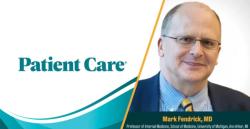© 2025 MJH Life Sciences™ , Patient Care Online – Primary Care News and Clinical Resources. All rights reserved.
Multidisciplinary Lung Cancer Screening Program Achieves Screening Rates Above 70%
A multidisciplinary lung cancer screening program significantly boosts screening rates, ensuring timely follow-ups and early diagnoses for eligible patients.
A comprehensive lung cancer screening program at the University of Rochester Medical Center increased screening rates from 32.8% to 71.6% over a 39-month period, according to results published October 15 in NEJM Catalyst Innovations in Care Delivery.1
“Our biggest success was not only screening a high percentage of eligible patients, but also enrolling those patients in the comprehensive program to ensure they receive the necessary annual follow-up screenings,” lead author Robert Fortuna, MD, MPH, professor of Primary Care and Pediatrics at the University of Rochester Medical Center (URMC), said in a press release.2
The program used a multidisciplinary approach that included educational outreach to practices, population health initiatives integrated into primary care, a coordinated recall process for annual screening and abnormal results, and a centralized program providing consultative support.1
Researchers enrolled patients aged 50 to 80 years who met the 2021 U.S. Preventive Services Task Force guidelines for lung cancer screening with annual low-dose computed tomography. Screening rates increased from 32.8% (2,825 of 8,620 eligible patients) in March 2022 to 71.6% (7,976 of 11,136) in June 2025.1
In the April 2025 reporting period, screening rates showed no statistical differences by race (71.5% white vs 70.9% Black, P=0.79), ethnicity (71.5% non-Hispanic vs 70.3% Hispanic, P=0.67), or sex (70.6% female vs 72.1% male, P=0.07). On-time completion of annual LDCT scanning exceeded 94% (7,434 of 7,895) over the year ending June 2025.1
During 2023 and 2024, the program diagnosed 63 cases of lung cancer, with 49 cases (77.8%) identified at an early stage.1
The program incorporated a patient registry, electronic health record prompts, patient navigators, and a dedicated outreach team. Primary care clinician engagement and support from radiology and pulmonary consultants were identified as essential components.1
The authors noted that fewer than 1 in 5 eligible patients in the US currently receive lung cancer screening, more than a decade after the USPSTF issued its initial screening recommendation in 2013. Lung cancer remains the leading cause of cancer-related mortality in the US.1
References:
- Fortuna RJ, Wandtke B, Nead MA, et al. A Comprehensive, Multidisciplinary Approach to Improving Lung Cancer Screening. NEJM Catal Innov Care Deliv. Published online October 15, 2025. doi:10.1056/CAT.25.0051
- How to double lung cancer screening rates. News release. University of Rochester Medical Center. October 15, 2025. Accessed October 16, 2025. https://www.eurekalert.org/news-releases/1101698

